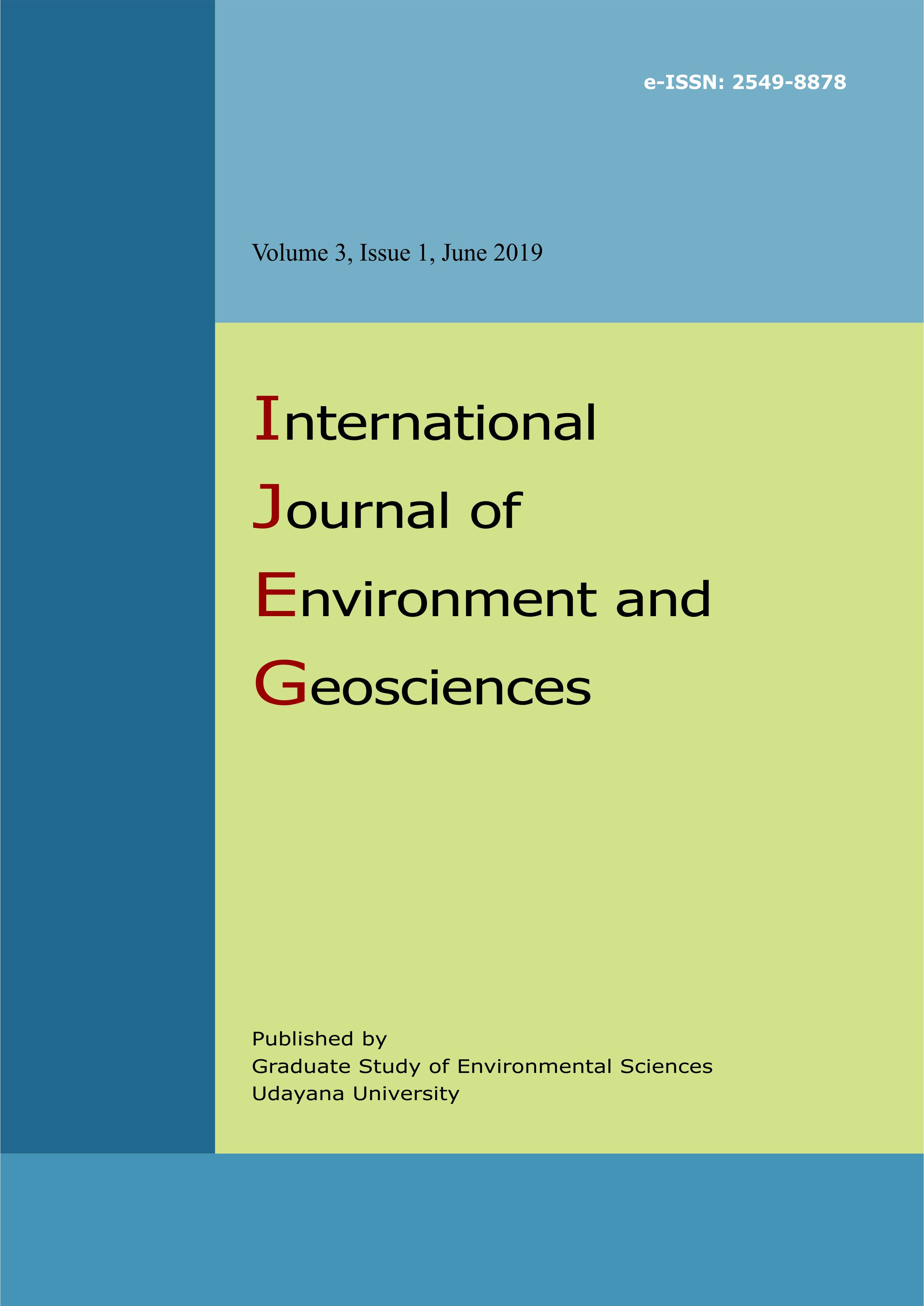Characteristics of Diurnal Rainfall Cycle Over Java as seen by the TRMM Precipitation Radar
Abstract
Precipitation is one element of climate that mostly studied in Indonesia because it has a very high diversity both temporal (time) as well as spatial (place). The diurnal cycle is one of the important factors in the occurrence of rain in the islands of Indonesia that have an impact on regional rainfall patterns in Indonesia. The diurnal cycle of precipitation is an essential component of the tropical climate and one of the predominant components of atmospheric variations. The aims of this research were to determine and analyze the spatial patterns and the characteristics of rainfall diurnal cycle in Java Island and the surrounding areas (Java Island, Java Sea and Indian Ocean) using remote sensing data. In this study, data from Tropical Rainfall Measuring Mission satellite (TRMM) Precipitation Radar level 2A25 and wind data from National Centers for Environmental Prediction (NCEP) for 5 years period from 2007 to 2011 are used. The results of this research are the spatial patterns of daily rainfall in Java Island and the surrounding areas are different between land and sea. In the land, rain generally occur in the afternoon (12.00 to 18.00 LT), whereas in the ocean (the Java Sea and Indian Ocean) generally occur at midnight and noon (00.00 to 12.00 LT). The characteristics of rainfall diurnal cycle in Java Island and the surrounding areas are effected by land-sea physical properties, day-night cycle and by land-sea location.
Downloads
Authors who publish with this journal agree to the following terms:
- All articles published by International Journal of Environment and Geosciences (IJEG) and Graduate Study of Environmental Sciences, Udayana University are made available under an open access license worldwide immediately. This means everyone has free and unlimited access to the full-text of all articles published in International Journal of Environment and Geosciences (IJEG), and everyone is free to re-use the published material given proper accreditation/citation of the original publication. Open access publication is supported by authors' institutes or research funding agency by payment of a comparatively article processing charge for accepted articles (See Author Fees). International Journal of Environment and Geosciences (IJEG) and Graduate Study of Environmental Sciences, Udayana University publish articles under the Creative Commons Attribution License.
- Authors are able to enter into separate, additional contractual arrangements for the non-exclusive distribution of the journal's published version of the work (e.g., post it to an institutional repository or publish it in a book), with an acknowledgement of its initial publication in this journal.
- Authors are permitted and encouraged to post their work online (e.g., in institutional repositories or on their website) prior to and during the submission process, as it can lead to productive exchanges, as well as earlier and greater citation of published work (See The Effect of Open Access).





